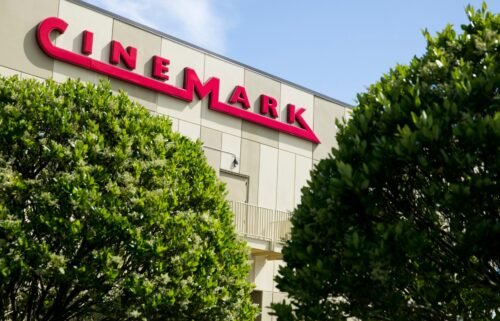‘We no longer know what reality is.’ How tech companies are working to help detect AI-generated images

For a brief moment last month
By Jennifer Korn
New York (CNN) — For a brief moment last month, an image purporting to show an explosion near the Pentagon spread on social media, causing panic and a market sell-off. The image, which bore all the hallmarks of being generated by AI, was later debunked by authorities.
But according to Jeffrey McGregor, the CEO of Truepic, it is “truly the tip of the iceberg of what’s to come.” As he put it, “We’re going to see a lot more AI generated content start to surface on social media, and we’re just not prepared for it.”
McGregor’s company is working to address this problem. Truepic offers technology that claims to authenticate media at the point of creation through its Truepic Lens. The application captures data including date, time, location and the device used to make the image, and applies a digital signature to verify if the image is organic, or if it has been manipulated or generated by AI.
Truepic, which is backed by Microsoft, was founded in 2015, years before the launch of AI-powered image generation tools like Dall-E and Midjourney. Now McGregor says the company is seeing interest from “anyone that is making a decision based off of a photo,” from NGOs to media companies to insurance firms looking to confirm a claim is legitimate.
“When anything can be faked, everything can be fake,” McGregor said. “Knowing that generative AI has reached this tipping point in quality and accessibility, we no longer know what reality is when we’re online.”
Tech companies like Truepic have been working to combat online misinformation for years, but the rise of a new crop of AI tools that can quickly generate compelling images and written work in response to user prompts has added new urgency to these efforts. In recent months, an AI-generated image of Pope Francis in a puffer jacket went viral and AI-generated images of former President Donald Trump getting arrested were widely shared, shortly before he was indicted.
Some lawmakers are now calling for tech companies to address the problem. Vera Jourova, vice president of the European Commission, on Monday called for signatories of the EU Code of Practice on Disinformation – a list that includes Google, Meta, Microsoft and TikTok – to “put in place technology to recognize such content and clearly label this to users.”
A growing number of startups and Big Tech companies, including some that are deploying generative AI technology in their products, are trying to implement standards and solutions to help people determine whether an image or video is made with AI. Some of these companies bear names like Reality Defender, which speak to the potential stakes of the effort: protecting our very sense of what’s real and what’s not.
But as AI technology develops faster than humans can keep up, it’s unclear whether these technical solutions will be able to fully address the problem. Even OpenAI, the company behind Dall-E and ChatGPT, admitted earlier this year that its own effort to help detect AI-generated writing, rather than images, is “imperfect,” and warned it should be “taken with a grain of salt.”
“This is about mitigation, not elimination,” Hany Farid, a digital forensic expert and professor at the University of California, Berkeley, told CNN. “I don’t think it’s a lost cause, but I do think that there’s a lot that has to get done.”
“The hope,” Farid said, is to get to a point where “some teenager in his parents basement can’t create an image and swing an election or move the market half a trillion dollars.”
‘An arms race’
Companies are broadly taking two approaches to address the issue.
One tactic relies on developing programs to identify images as AI-generated after they have been produced and shared online; the other focuses on marking an image as real or AI-generated at its conception with a kind of digital signature.
Reality Defender and Hive Moderation are working on the former. With their platforms, users can upload existing images to be scanned and then receive an instant breakdown with a percentage indicating the likelihood for whether it’s real or AI-generated based on a large amount of data.
Reality Defender, which launched before “generative AI” became a buzzword and was part of competitive Silicon Valley tech accelerator Y Combinator, says it uses “proprietary deepfake and generative content fingerprinting technology” to spot AI-generated video, audio and images.
In an example provided by the company, Reality Defender highlights an image of a Tom Cruise deepfake as 53% “suspicious,” telling the user it has found evidence showing the face was warped, “a common artifact of image manipulation.”
Defending reality could prove to be a lucrative business if the issue becomes a frequent concern for businesses and individuals. These services offer limited free demos as well as paid tiers. Hive Moderation said it charges $1.50 for every 1,000 images as well as “annual contract deals” that offer a discount. Realty Defender said its pricing may vary based on various factors, including whether the client needs “any bespoke factors requiring our team’s expertise and assistance.”
“The risk is doubling every month,” Ben Colman, CEO of Reality Defender, told CNN. “Anybody can do this. You don’t need a PhD in computer science. You don’t need to spin up servers on Amazon. You don’t need to know how to write ransomware. Anybody can do this just by Googling ‘fake face generator.’”
Kevin Guo, CEO of Hive Moderation, described it as “an arms race.”
“We have to keep looking at all the new ways that people are creating this content, we have to understand it and add it to our dataset to then classify the future,” Guo told CNN. “Today it’s a small percent of content for sure that’s AI-generated, but I think that’s going to change over the next few years.”
A preventative approach
In a different, preventative approach, some larger tech companies are working to integrate a kind of watermark to images to certify media as real or AI-generated when they’re first created. The effort has so far largely been driven by the Coalition for Content Provenance and Authenticity, or C2PA.
The C2PA was founded in 2021 to create a technical standard that certifies the source and history of digital media. It combines efforts by the Adobe-led Content Authenticity Initiative (CAI) and Project Origin, a Microsoft- and BBC-spearheaded initiative that focuses on combating disinformation in digital news. Other companies involved in C2PA include Truepic, Intel and Sony.
Based on the C2PA’s guidelines, the CAI makes open source tools for companies to create content credentials, or the metadata that contains information about the image. This “allows creators to transparently share the details of how they created an image,” according to the CAI website. “This way, an end user can access context around who, what, and how the picture was changed — then judge for themselves how authentic that image is.”
“Adobe doesn’t have a revenue center around this. We’re doing it because we think this has to exist,” Andy Parsons, Senior Director at CAI, told CNN. “We think it’s a very important foundational countermeasure against mis- and disinformation.”
Many companies are already integrating the C2PA standard and CAI tools into their applications. Adobe’s Firefly, an AI image generation tool recently added to Photoshop, follows the standard through the Content Credentials feature. Microsoft also announced that AI art created by Bing Image Creator and Microsoft Designer will carry a cryptographic signature in the coming months.
Other tech companies like Google appear to be pursuing a playbook that pulls a bit from both approaches.
In May, Google announced a tool called About this image, offering users the ability to see when images found on its site were originally indexed by Google, where images might have first appeared and where else they can be found online. The tech company also announced that every AI-generated image created by Google will carry a markup in the original file to “give context” if the image is found on another website or platform.
Not just a private sector solution
While tech companies are trying to tackle concerns about Ai-generated images and the integrity of digital media, experts in the field stress that these businesses will ultimately need to work with each other and the government to address the problem.
“We’re going to need cooperation from the Twitters of the world and the Facebooks of the world so they start taking this stuff more seriously, and stop promoting the fake stuff and start promoting the real stuff,” said Farid. “There’s a regulatory part that we haven’t talked about. There’s an education part that we haven’t talked about.”
Parsons agreed. “This is not a single company or a single government or a single individual in academia who can make this possible,” he said. “We need everybody to participate.”
For now, however, tech companies continue to move forward with pushing more AI tools into the world.
The-CNN-Wire
™ & © 2023 Cable News Network, Inc., a Warner Bros. Discovery Company. All rights reserved.

